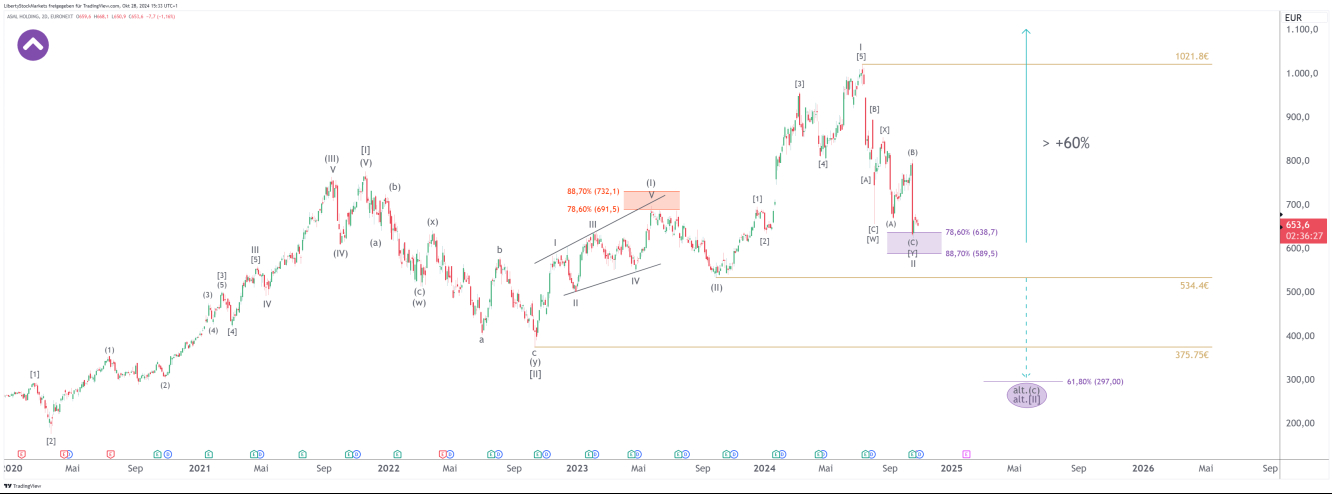Despite ASML Holding NV (LON:0QB8)'s central role in the semiconductor industry, the share price came under pressure after the last quarterly figures. A share price loss of over 15 percent caused the company's market value to fall by 60 billion euros within hours, temporarily pushing SAP to the top as the most valuable European technology company.
This was due to incoming orders in the third quarter being well below expectations and a reduced revenue forecast for 2025. In addition, tighter export restrictions to China, a key market for ASML, are weighing on the outlook. While revenues remain stable in the short term, geopolitical tensions and the slow recovery of individual market segments point to risks in the coming year.
It won't work without ASML
ASML Holding (AS:ASML) N.V. (Advanced Semiconductor Materials Lithography) is a leading Dutch company in the field of semiconductor technology and the world's largest supplier of lithography systems for the chip industry. ASML's highly complex machines are essential for the production of microchips and are used by almost all major chip manufacturers. The company has an estimated market share of 80-90% in the global market for lithography equipment and serves its customers in over 60 service locations in 14 countries.
Reason enough for us to keep a close eye on this company:
We believe that the stock is in the process of forming a strong and long-term bottom within the purple box between €638.7 and €589.5, after which it will enter a very strong uptrend that will take the stock close to and finally above the previous all-time high at €1021.8. So we are likely to see a very good buying opportunity shortly.

You can get a detailed forecast for this stock on our website. You will find the link above this text next to my profile picture.
Are the sanctions against China successful at all?
According to ASML CEO Christophe Fouquet, Chinese semiconductor manufacturers can start limited production of 5nm and 3nm chips thanks to older DUV lithography machines that they are allowed to continue purchasing. However, the US is seeking further trade restrictions against China to slow its technological progress.
ASML was already under pressure to explain itself after the latest quarterly report due to only half as many new orders as expected, but this was mainly due to increased advance purchases by Chinese customers in the previous quarter to pre-empt possible US restrictions. Despite the lack of new restrictions, ASML expects a return to previous sales figures, with China previously accounting for around 20 to 25 percent of revenue – albeit only with DUV technology, as exports of EUV equipment to China are banned.
Nevertheless, Chinese manufacturers are continuing their developments: to reduce dependencies on Western technology, Hisilicon, a subsidiary of Huawei, has already developed a portfolio of semiconductor products for production in China. China is also increasingly going its own way when it comes to software, particularly in the area of EDA software, with the long-term aim of developing and producing more products completely independently.
***
Disclaimer/Risk warning:
The information provided here is for informational purposes only and does not constitute a recommendation to buy or sell. It should not be understood as an explicit or implicit assurance of a particular price development of the financial instruments mentioned or as a call to action. The purchase of securities involves risks that may lead to the total loss of the capital invested. The information provided does not replace expert investment advice tailored to individual needs. No liability or guarantee is assumed, either explicitly or implicitly, for the timeliness, accuracy, appropriateness or completeness of the information provided, nor for any financial losses. These are expressly not financial analyses, but journalistic texts. Readers who make investment decisions or carry out transactions based on the information provided here do so entirely at their own risk. The authors may hold securities of the companies/securities/shares discussed at the time of publication and therefore a conflict of interest may exist.
